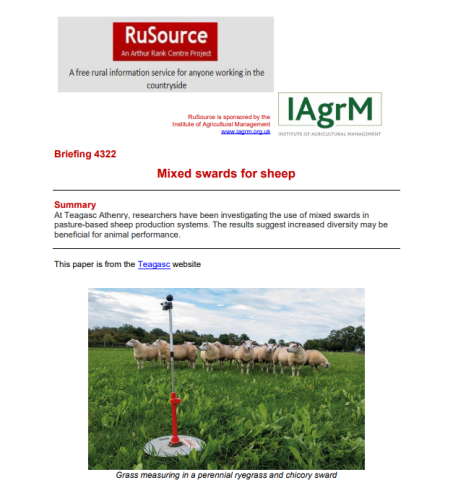In recent years, there has been growing interest in the inclusion of clovers and herbs into grassland seed mixes to form more diverse sward mixtures. These mixed swards have the potential to improve sward quality and increase animal intakes leading to significant improvements in animal performance.
Clovers are associated with increased crude protein content in the sward and a reduced requirement for artificial nitrogen application through biological nitrogen fixation. Deep rooting herbs such as plantain and chicory are drought-tolerant and can uptake minerals from deeper in the soil, giving a high mineral content in the sward. An experiment was established in Teagasc Athenry in 2018 and ran for four production years (2018-2021) investigating a range of mixed swards and their impacts on both sward and animal performance under a pasture-based sheep production system.


